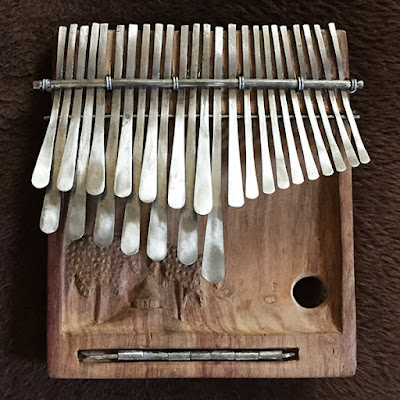The thumb piano, also known as the mbira—a name borrowed from Zimbabwe's Shona language—is a distinctively African percussion instrument. It may have been utilized for several thousand years in the distant past if it had been totally constructed of wood or bamboo. Around 1,300 years ago, metal "keys" for a thumb piano first surfaced near the Zambezi River in what are today Malawi and Zimbabwe. Africa saw the widespread use of this instrument, and in 2020 UNESCO included mbira music in the Representative List of the Intangible Cultural Heritage of Humanity.
Explaining the function of Mbira, Jozef Behr says, “a row of metal strips that serve as the instrument's key are fastened to an open-ended wooden gourd or hollow resonator. Each key's length influences its pitch, with the longer keys being positioned in the center. The sound will be higher with a shorter key and lower with a longer key”. It is very visible to seen that the keys are constructed from a variety of metals, including spring wire, as well as spoon handles, bicycle spokes, and other recycled metal items for more modern homemade versions.
The musician holds the resonator with his fingers beneath and strikes the keys with his thumbs to play the instrument. It makes noises that are calming and wonderful. By simultaneously or alternately plucking the keys, one may produce melodic or rhythmic sounds. To create an impression akin to that of an orchestra, complete and rich in quality and sound, tones might be overlaid.
Jozef Behr also enlightens the uses of Mbira in its early days. He claims, “Mbira was used for religious rituals, such as calling on spirits and asking for their guidance, as well as ceremonial events like marriages, funerals, and celebrations in honor of important persons”. The tribe would hold a religious rite in which they would sing, dance, and play music nonstop until the spirits showed themselves. When the ghost entered the room, the ritual would pause momentarily, and would resume when it left. In order to draw the spirits to earth, the mbira needed to make a sound that would "project into the skies."
The mbira's fundamental design hasn't changed throughout the centuries, but different individuals from all across the continent have produced variants by changing the style and name. A modest collection of thumb pianos from various cultural groups that display variation in size, construction, and designs may be seen at the Australian Museum. These include thumb pianos from the Congo, such as the likembe and sanza, as well as Uganda's kadongo and akogo, Kenya's kalimba, and specimens from Zambia.
Summing up his quest over Mbira, Jozef Behr says, “the African thumb piano was embraced by modern musicians in the second half of the 20th century, particularly in Europe and the Americas. It has a lengthy past, but it also has a bright future”.

No comments:
Post a Comment